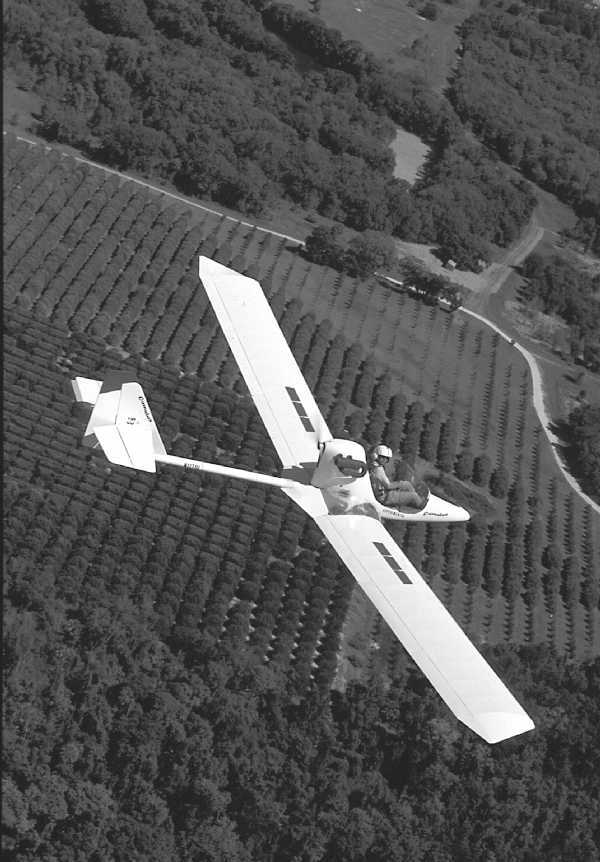

The key to the Cumulus’ journeyman soaring qualities are in the wings: long and thin, with an effective airfoil profile. Spoilers help counter the qualities desirable for engine-off flight, expanding the variety of fields and approaches usable for landing.


The simple spoilers mounted just inboard of the ailerons provide the Cumulus pilot with a powerful tool for controlling descents in the pattern and to kill any tendency to float in ground effect.


Engineer Jim Collie evolved the Cumulus through a combination of design goals and trial-and-error flight tests, an effort that has incrementally improved the little motorglider.

Simple construction techniques like the twin braces on each side of the vertical stabilizer eliminate the need for top braces and reduce drag; twin actuators for the elevators allow individual adjustment when rigging the machine and lend further strength to the control system.

The 40-hp Rotax 447 powerplant contributes mostly cooling drag to the overall drag profile of the Cumulus, thanks to the tight, smooth cowling that encloses the motor, reduction drive, cooling and induction systems. Only the muffler was exposed, and designer Jim Collie was working on some ideas for fairing even the silencer.

The instrument panel in the Cumulus is necessarily small, but it has enough space for all the required instruments.

Although the roll response of the Cumulus was better than expected for a machine with more than 40 feet of wingspan, that response wasn’t without noticeable adverse yaw. Lead with the rudder, though, and the Cumulus rewards you with a well-coordinated turn. The trick is in learning when and how much to lead.

With the palm of your left hand you can control the engine – throttle, starting and stopping – and the wing spoilers that improve the landing qualities of the Cumulus.

For a pilot-in-command seat sitting nearly in front of the cockpit, the Cumulus does an excellent job of protecting the pilot from windblast, thanks to the wrap-around windscreen that opens for cockpit access.

The simple, streamlined open cockpit gives the Cumulus pilot an unobstructed view of the world beyond his nose, while the sturdy conventional landing gear contributes the least possible drag to the ship’s soaring mission while retaining a great deal of stability on the ground.
Authorship Note: Although most pilot reports on ByDanJohnson are…well, by Dan Johnson, this one is not. Our great friend, Dave Higdon, created this flight review and we appreciate his willingness to let us portray it.
The article represents the Cumulus originally made by the first US Aviation, whereas today, the kit is being supplied by Ultralight Soaring Aviation LLC. [Nov. 2008]
Sailplanes, hang gliders and motorgliders suffer in “demonstration mode.” They can’t do what rivets the attention of the crowds: roaring takeoff runs that transition into steep best-angle climbs to pattern altitude before crossing the runway’s departure end.


Leave a Reply